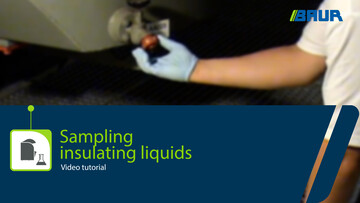Test insulating oil – avoid downtimes
Recommendations for the lifeblood of transformers
Insulating oils ensure the safe operation of power transformers. The ageing condition of these oils changes due to oxidation, thermal stress and contact with the other materials and significantly determines the service life of the transformer.
If the inspection of these insulating oils is neglected, this leads to failures. You can see the serious consequences of these failures in the video. To avoid such accidents, there are recommendations as to when the insulating oils should be checked:
Further topics relating to insulating oil testing:





